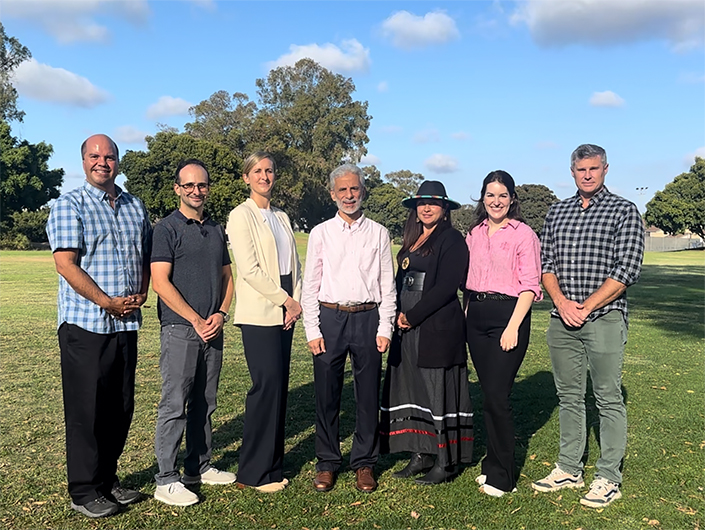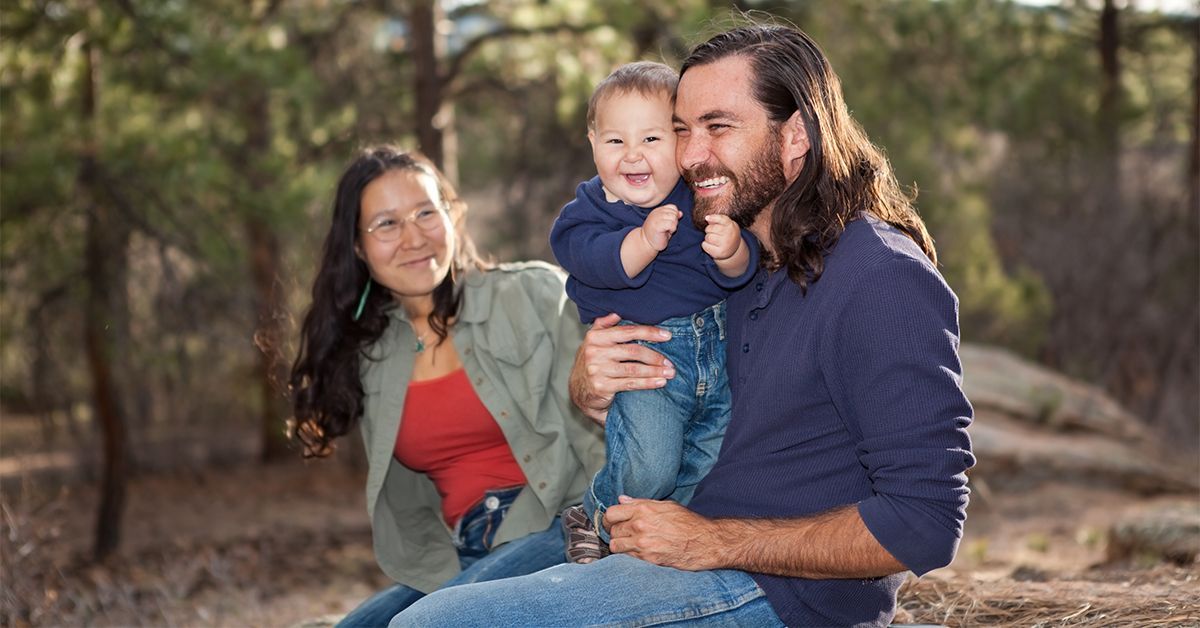Addressing Tobacco Use in California’s Native American Communities
A UC San Diego-led study assessed the impact of culturally tailored tobacco use prevention initiatives
Story by:
Published Date
Story by:
Topics covered:
Share This:
Article Content
Tobacco use in the form of cigarettes, smokeless tobacco and other commercial products remains one of the leading causes of illness and death in the United States and has a greater impact on Native American communities which experience higher rates of tobacco-related cancers.
According to the California Prevention Program at the California Department of Public Health (CDPH), commercial tobacco use among Native American adults in California exceeds the state average — 14.8% compared to 11.4% in 2022. In recent years, efforts to address these disparities have taken center stage. California Proposition 56, a ballot initiative approved by voters in 2016 to increase cigarette taxes by $2, required a certain percentage of the proceeds to focus on communities disproportionately affected by tobacco use.

The California Native American Tobacco Initiative Evaluation (CAITIE) — led by Wael Al-Delaimy, M.D., Ph.D., professor of public health at the Herbert Wertheim School of Public Health and Human Longevity Science at University of California San Diego — has emerged as a leader in the effort to evaluate the impact of culturally tailored tobacco use prevention initiatives.
One of the features that distinguishes CAITIE from similar programs is its emphasis on cultural relevance. Unlike commercial tobacco products like cigarettes and vapes, traditional tobacco holds a sacred place in many Native American ceremonies. This distinction became a cornerstone of education campaigns funded under the initiative. By empowering tribal communities to reclaim their cultural practices and educating youth about the harmful impacts of commercial tobacco, the program aimed to foster long-term health improvements.
A community-centered initiative
In 2019, the Tobacco Control Program (TCP) at the CDPH launched the state’s first California Native American Tobacco Initiative. By directly funding tribal governments and tribal-serving organizations, the initiative sought to reduce tobacco-related health disparities in Native American communities through tribal approaches focused on commercial tobacco use prevention and reduction, collaboration, and community engagement.
The initiative can be viewed as a model for state and national programs. Direct funding to tribal governments is a unique and empowering approach to address health disparities in Native American communities.
The initiative’s objectives included reducing commercial tobacco-related usage disparities through policy changes, community mobilization and capacity building within tribes. Between 2019 and 2024, the initiative supported 13 tribes and four tribal-serving organizations, facilitating a range of activities such as tobacco cessation programs, youth coalitions, media campaigns and new tobacco control policies.
“Our work is guided by cultural humility and a commitment to listen first and act collaboratively”
A first-of-its-kind, culturally competent evaluation
As an epidemiologist, Al-Delaimy has extensive experience working with vulnerable populations worldwide. Despite initial hesitation and mistrust from Native American communities, Al-Delaimy’s background in community engagement and culturally sensitive research proved instrumental to CAITIE’s success. “Our work is guided by cultural humility and a commitment to listen first and act collaboratively,” he said.
CAITIE’s evaluation methods included surveys, interviews and culturally significant methodologies like talking circles, ensuring the research resonated with Native American values. Talking circles, unlike traditional focus groups, emphasize collective discussion and consensus. They often include opening and closing ceremonies and communal meals, fostering trust and shared understanding.
Key to the initiative’s success was the establishment of an evaluation advisory committee, which provided historical and cultural insights that informed the evaluation’s approach.
“The advisory committee endeavored to provide the CAITIE team with valuable information they could use to develop their evaluation,” noted Danielle Lippert, member of the Northern California Estom Yumeka Maidu Tribe and an advisory committee member. “The perspective of the committee members bridged critical gaps between tribal needs and the objectives that the initiative wanted to attain.”
Measuring outcomes
CAITIE revealed significant progress in tobacco use prevention within tribal communities, including the following key findings.
- Community engagement: The California Native American Tobacco Initiative projects built trust and served as reliable sources for tobacco education. For example, when projects paired commercial tobacco control programming with cultural activities such as Powwows, projects saw youth more strongly embraced their culture, were more empowered to be leaders for commercial tobacco control initiatives and advocated for their community’s health.

- Policy advancements: Tribal government’s support played a critical role in policy adoption. Most projects within the initiative had passed and implemented at least one commercial tobacco control policy, if not several policies. For example, several tribes reported temporarily banning smoking due to the COVID-19 pandemic, and some retained the ban once the pandemic-related restrictions were lifted.
- Partnerships: Collaborative efforts among tribes and organizations fostered capacity building, improving program outcomes and sustainability. For example, projects with the local education department more easily organized youth coalitions and fulfilled youth education actions.
One of CAITIE’s key takeaways was the importance of culturally relevant approaches. For instance, it noted the importance of distinguishing traditional tobacco’s sacred role in ceremonies from commercial tobacco’s harmful impacts. “This nuanced understanding shifted community perceptions and bolstered support for commercial tobacco use prevention,” said Nathaniel Gonzalez, Ph.D., senior research analyst in the Center for Research and Evaluation at the UC San Diego Division of Extended Studies and a researcher on the project.
Overcoming challenges

CAITIE faced hurdles, including the COVID-19 pandemic, which limited in-person interactions critical for building trust. According to members of CAITIE’s advisory committee, Native American communities traditionally rely on face-to-face communication to foster trust, often over shared meals or ceremonies. These practices were disrupted during the pandemic, requiring engagement strategies to be conducted virtually, such as through Zoom meetings.
Despite these challenges, the research team’s cultural sensitivity and adaptability — including hiring Native American staff — ensured meaningful engagement and comprehensive findings.
Another significant challenge noted by the CAITIE advisory committee was the mistrust many Native American communities harbor toward external evaluators, stemming from historical exploitation. Al-Delaimy’s team prioritized cultural humility, emphasizing reciprocal benefit in their work. “Our goal was to ensure that the knowledge we gathered was not only respectful but also useful to the communities we engaged with,” said Al-Delaimy.
Recommendations for future initiatives
Based on CAITIE’s findings, the team offered recommendations for future funding. These include:
- Expanding youth engagement: Focus on programs that empower youth through cultural education and leadership opportunities.
- Enhancing collaboration: Facilitate inter-tribal partnerships and knowledge sharing.
- Promoting holistic wellness: Integrate traditional practices with modern health interventions.
- Increasing flexibility: Adjust funding structures to accommodate tribal definitions of success and cultural needs.
- Supporting local campaigns: Invest in media and educational materials tailored to specific tribal contexts.
- Addressing the vaping epidemic: Focus on youth-targeted programs to combat the rise of e-cigarette use.
Moving forward
CAITIE not only highlighted the initiative’s successes but also informed the design of future funding cycles. The success of Al-Delaimy’s team led to the continuation of their role in the evaluation of the initiative now in its sixth year, underscoring the impact of their culturally attuned approach. “Our goal is to ensure these findings translate into sustained improvements for Native American communities,” he emphasized.
Further, a significant goal of the CAITIE team was to mentor and increase the capacity of individuals from Native American communities in public health and higher education. They did so by including four interns from those communities who are now fully integrated into positions at UC San Diego and elsewhere.
The evaluation can also serve as a model for other states and federal programs aiming to address health disparities. By centering Native American knowledge and practices, the initiative and its evaluation offer invaluable lessons for achieving health equity. Projects that embraced holistic wellness and cultural reclamation were particularly successful, demonstrating the power of integrating traditional practices with public health goals.
The UC San Diego CAITIE team included Wael Al-Delaimy, M.D., Ph.D., Chag Lowry, M.Ed., Georgia Kovacs, Ph.D., Kelly Nielsen, Ph.D., Nathaniel Gonzalez, Ph.D., Lauren Nippoldt, Ph.D., and Alexxa Casanova. The team reflects a collective dedication to health equity and cultural respect. Their work sets a precedent for integrating Indigenous knowledge into public health interventions, offering a blueprint for addressing health disparities nationwide
“A strength of the work of the California Native American Tobacco Initiative is that it centers indigenous perspectives while also creating a pathway for effective approaches to addressing tobacco use, reducing disease and improving health,” said Cheryl A. M. Anderson, Ph.D., dean of the Herbert Wertheim School of Public Health and Human Longevity Science.
Topics covered:
Share This:
You May Also Like
Stay in the Know
Keep up with all the latest from UC San Diego. Subscribe to the newsletter today.




